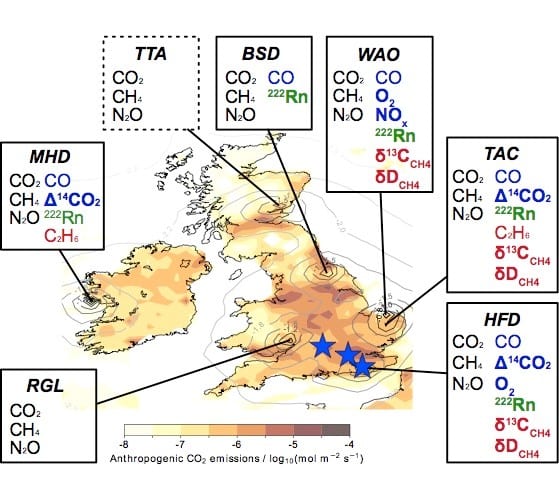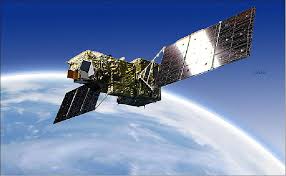Atmospheric measurements
Previous and ongoing projects such as NERC GAUGE and the UK DECC network have provided a UK dense network for in situ GHG monitoring, see map below. In this proposal, we will leverage existing GHG measurement networks and recent investments by BEIS, NERC, NCAS and NPL, and produce new data sets: ∆14CO2 and O2 for monitoring fossil fuel CO2, high-frequency 222Rn measurements for Chemical Transport Model evaluation, and high-frequency, high-precision δ13 CCH4 and δDCH4 for sector-level CH4 emissions estimation. We will also conduct new observations of δDCH4 and C2H6 near to emission sources to quantify poorly-known emission sector signatures in the UK. These new measurements will be deployed at sites in south-east England, which is the most urbanised region of the country, with strong and diverse sources, see map below. We will link these measurements to the urban-scale network that is being developed in the new NERC funded “London GHG” project (Matt Rigby is co-Investigator) and to European projects (e.g. ICOS ).

We will deploy remote-sensing observations of column-averaged CO2 and CH4 at sites in southeast England to link with and evaluate existing satellite observations (OCO-2, TanSat, Sentinel 5-P and GOSAT) and those planned during the course of this project (OCO-3 and MicroCarb).

